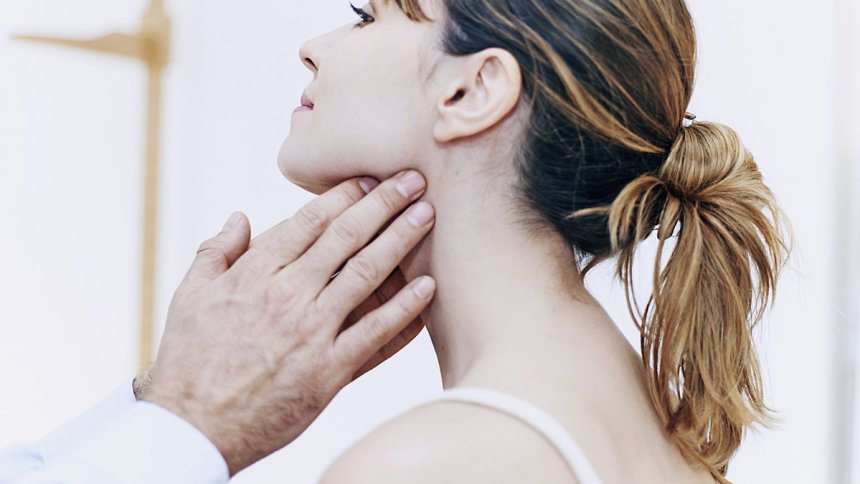Most people don’t give their lymphatic system a second thought—until they start feeling strangely off. We’re talking unexplained fatigue, tightness, puffiness, brain fog that lingers like bad weather, or even stubborn skin issues. It’s one of those parts of the body that quietly keeps things running in the background—until it doesn’t. And when your lymph gets sluggish, the ripple effect shows up all over.
Unlike your blood, which gets pumped around by your heart, lymph doesn’t have a dedicated motor. It relies on you—your movement, your breath, your hydration—to keep it moving. If it stagnates, waste builds up, inflammation creeps in, and you start to feel less like yourself. Getting your lymph flowing again isn’t some fringe wellness hobby—it’s basic body maintenance. And it matters more than most of us realize.
Why Movement Matters More Than Ever
The lymphatic system doesn’t ask for much, but it doesn’t do well with stillness. It’s built to flow with muscle contraction, and when you’re sitting at a desk for eight hours, that flow comes to a crawl. Add in poor posture, tight clothes, shallow breathing, and you’ve basically sent your lymph into a traffic jam.
Walking is one of the simplest ways to help your lymph move again, especially when you include a bit of bounce in your step. Jumping—on a trampoline, a gym floor, or just in place—doesn’t just get your heart rate up. That up-and-down motion acts like a pump, helping move fluid up through the body’s one-way lymph valves. But it doesn’t need to be intense. A gentle yoga flow, especially sequences that involve twists and inversions, can have just as much impact.
Breathing plays its own role, too. Deep belly breaths create pressure changes in the diaphragm that push lymph through central ducts. That’s part of why shallow, chest-based breathing from chronic stress slows everything down—it literally cuts off one of your lymph system’s most natural tools.
Stretching Isn’t Just About Flexibility Anymore
Stretching used to be the part of a workout everyone rushed through, but it’s getting new attention—and not just from athletes. Your lymphatic vessels travel alongside your muscles and fascia, and when you’re tight or restricted, that fluid has a harder time moving. That’s where targeted elongation becomes more than just a cool-down.
There’s growing interest in centers that offer assisted stretching, and it’s not hard to see why. When someone else helps guide your body through deeper stretches—especially with rhythmic breathing and proper alignment—you hit a level of release that solo sessions just can’t touch. These sessions don’t just make your hamstrings feel looser. They help reset fluid dynamics through the lymph vessels, especially in areas that tend to get backed up, like the groin, armpits, and neck.
You can get similar benefits from restorative yoga or even just daily stretching at home, but the hands-on, personalized nature of these specialized sessions brings a different level of support, particularly for people who struggle to stay consistent on their own.
The Skin Is Talking. Are You Listening?
The lymphatic system lives just under the skin, so when things slow down, your complexion can be one of the first places it shows. Think puffiness around the eyes, skin that looks dull or congested, or breakouts that don’t clear up with the usual routines. That’s because toxins and waste byproducts aren’t being carried away as they should.
Dry brushing has long been used to stimulate lymph flow, and while it’s not a magic cure, it’s a decent support tool when used properly. The trick is to brush in slow, sweeping motions toward the heart, starting from the extremities. It only takes a few minutes, but it can leave your skin feeling more awake and give your lymphatic system a bit of a nudge.
Facial massage also plays a role here. We’re not talking about a quick rubdown with overpriced creams. Lymphatic facial techniques focus on light, sweeping movements that encourage fluid to drain from under the eyes, along the jawline, and down the neck. It doesn’t just make your face look more sculpted (though it does). It actually helps reduce the congestion under the surface that’s often to blame for that puffy, tired look.
If you’ve ever had a deep tissue massage, you’ve probably felt the kind of post-session clarity that goes beyond muscle relief. That’s lymph movement in action. Those deeper strokes push through tight fascia and help push lymph through sluggish zones that need a little extra pressure to start flowing again.
Hydration Isn’t Just a Summer Thing
Most people think of hydration as something you worry about when it’s hot or when you’re working out. But your lymphatic system depends on proper fluid balance every single day. It’s made up of water, after all—if you’re dehydrated, your lymph thickens, and circulation slows to a crawl.
Coffee, alcohol, and salty food can all dehydrate you faster than you think, especially when you’re not drinking enough plain water to offset it. You don’t need to chug a gallon a day, but steady hydration matters. Herbal teas, broth, or water with a pinch of sea salt can help keep your electrolytes balanced, which in turn keeps lymph flowing at a healthy pace.
People with chronic inflammation or autoimmune conditions often notice they feel puffy or swollen after travel or stress. That’s not just water weight—it’s often sluggish lymph that needs help moving. Upping hydration, even temporarily, can help flush things out and reduce that feeling of heaviness that shows up for no obvious reason.
Sleep, Sweat, Repeat
While you sleep, your body does a lot more than rest. Your glymphatic system (yes, with a “g”) clears waste from the brain, and your lymphatic system drains toxins from tissues. That overnight work depends on your sleeping position, how deeply you rest, and whether your body has the resources it needs to get the job done.
Side-sleeping, especially on your left side, appears to help drain lymph more efficiently. But it’s not just the position—it’s the quality of sleep. Restless, broken sleep slows everything down. Creating better sleep hygiene—dimming lights before bed, limiting screens, and avoiding heavy meals late—can help support deeper rest, which gives your lymph the hours it needs to catch up.
Sweating is another key piece. When your lymphatic system works well, waste gets funneled out through urine, feces, and sweat. If you rarely sweat—because you don’t move much, or you’re always in climate control—that exit route gets neglected. Saunas, hot baths, and even short bursts of cardio can open those pathways again. It’s not about working out harder. It’s about creating more ways for the system to do what it’s already trying to do.
The Wrap-Up
Your lymphatic system doesn’t need fancy supplements, expensive detoxes, or complicated rituals. It needs what your body was built for: movement, hydration, sleep, and breath. Most of us are already dealing with low-level inflammation, whether from stress, processed food, hormones, or just sitting too much. Supporting your lymph is one of the quietest ways to counteract all of that without needing a total lifestyle overhaul.
When your lymph moves better, you think clearer. Your skin looks brighter. That weird puffy feeling in your face or ankles eases up. You don’t feel so bogged down. It’s subtle, but it adds up. You start to feel like yourself again—and that’s something you’ll notice, even if no one else can quite put their finger on what changed.
Lynn Martelli is an editor at Readability. She received her MFA in Creative Writing from Antioch University and has worked as an editor for over 10 years. Lynn has edited a wide variety of books, including fiction, non-fiction, memoirs, and more. In her free time, Lynn enjoys reading, writing, and spending time with her family and friends.















